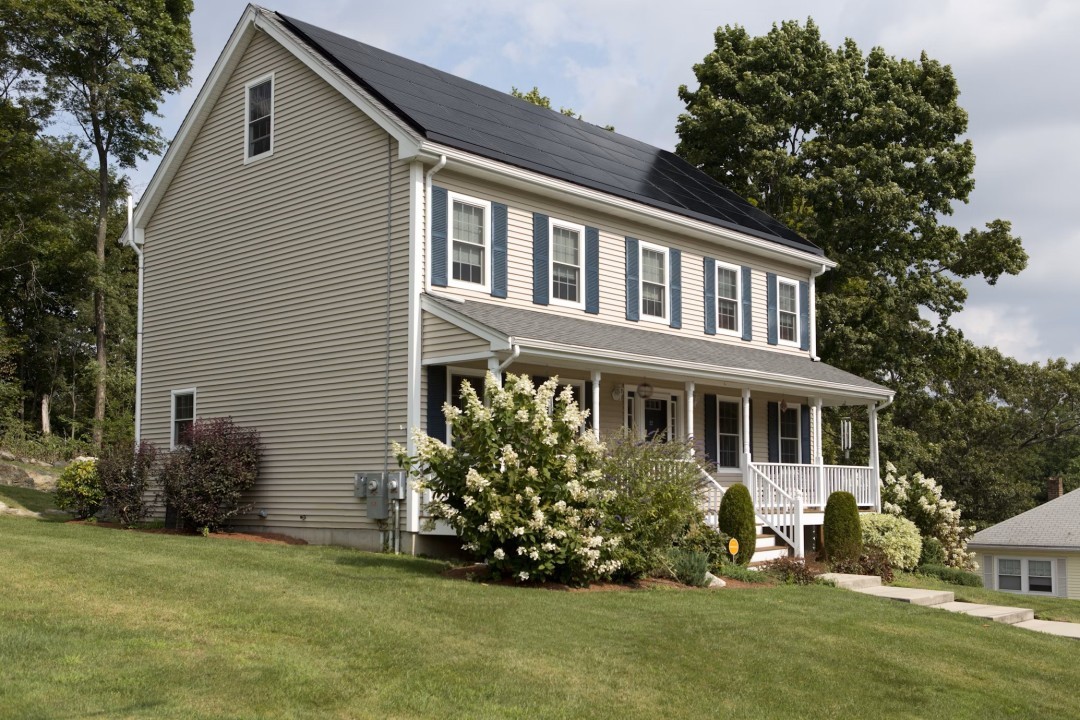The Role of Emerging Technologies in Enhancing Home Resilience to Climate Change

By: Katie Brenneman
Technology is used to create a more comfortable life for folks every day.
GPS technology eases a morning commute, AI applications assist with brainstorming and problem-solving, and home security systems protect families from external threats.
In the same way that tech is required to keep you safe and comfortable, your home needs thoughtful solutions to adapt to climate change factors like brutal storms or other natural disasters.
We’ll discuss some smart home technology you can implement to protect your house from climate change, along with lifestyle and design solutions you can use to increase personal sustainability practices.
Adaptable Smart Home Devices for Climate Change
Smart home devices are more than just items that boost your means of entertainment. They can respond to climate change issues and prepare your home for air quality changes, unpredictable weather, and natural disasters. More than this, they can help you live more sustainably to reduce your environmental impact.
Smart Thermostats
Smart thermostats make it easier to adjust your energy usage for heating and cooling your home. You can track your household’s energy usage, giving you a firm insight into the strength of your home’s HVAC system. From this data, you can determine if the heating and cooling system is siphoning too much energy (and, therefore, money) and needs replacing.
Since smart thermostats can also be operated remotely and through sensor-based technology, your home’s temperature can be perfectly adjusted according to the climate. Energy tracking and optimizing your home’s temperature can protect you from the unpredictable weather that climate change brings while preventing you from contributing to excessive energy usage.
Water Sensors
Water sensors can immediately detect any leaks and send you an alert, allowing you to respond and swiftly turn off the water in your home. These sensors can be placed near your washer/dryer, under your sinks, or next to your water heater. Stopping leaks quickly and efficiently prevents water waste and keeps your home safe from costly damage.
Air Purifiers
Modern air purifiers use sensor-based technology to detect pollutants in your home and automatically adjust to restore clean air to your space. You can also monitor your home’s air quality remotely with your phone, helping you keep your pets and children safe when you are away. Since climate change can affect ground-level ozone and alter air quality, having these smart air purifiers available can be a real game-changer.
Home Design Upgrades for Increased Storm Security
With climate change comes the prospect of devastating storms and natural disasters. No matter where you are located, keeping your home safe from the elements requires advanced precautions.
High winds and flurrying debris can easily destroy your windows during a hurricane or other inclement weather conditions. Out of all home design alterations you can make, including shatter-proof windows in your space is likely the most important. It can be the difference between the need for minor repairs and long-term renovations due to storm damage. These windows contain glass reinforced by resin layers, offering strength and energy efficiency at the same time.
If replacing your windows is a bit of a burden for you now, you can make other safety adjustments to prevent interior damage during a storm. Hurricane shutters are a necessary component if you live in an area that is known to be affected by tropical storms.
You can easily add this removable option to your home right before a storm hits, shielding your windows from beating rain, tree limbs, and wild wind. Hurricane shutters nowadays are much stronger than they used to be – modern tech allows for aluminum or polycarbonate construction for maximum security.
To further protect your home, you can also replace your primary entryways with storm-proof doors. These doors are made of materials like steel and shatter-resistant glass, increasing stability and preventing leaks and rampant debris from entering your space. With these changes, you can feel confident that your family will be safe from whatever natural disasters climate change brings.
Sustainable Home & Lifestyle Changes
Some smart home tech devices are more accessible than others through navigation or overall cost. However, there is no better protection for your home than making sustainable alterations to your lifestyle.
Even if purchasing new storm doors or replacing the windows in your home isn’t possible right now, you can still alter your home and daily practices in an eco-friendly way. Plus, going green benefits your health as it benefits the environment — it’s a symbiotic relationship.
Being conscious of your energy usage at home can positively impact climate change. Many, if not most, homes rely on fossil fuels for heating and cooling. Instead, opt for solar energy, a transition that can also save you money down the line. If installing solar panels isn’t possible for your living situation, take advantage of your home’s natural lighting during the day.
Making changes to your diet can also help the environment. Food production and distribution accounts for 35% of global greenhouse gas emissions, with 60% of these emissions stemming from meat production. Cutting back on your meat consumption means reducing the demand for meat products, effectively lowering these toxic outputs.
The Takeaway
Though climate change is largely out of your control, you don’t have to be defenceless. Taking advantage of smart tech advancements allows you to stay ahead of hazardous weather conditions that threaten the integrity of your home. Even making some of the above changes or implementing a few recommended devices into your space can save you money and help reduce any further harm to the environment.
________________________________________
Katie Brenneman is a passionate writer specializing in business management, tech innovations, education, and sustainability-related content.



